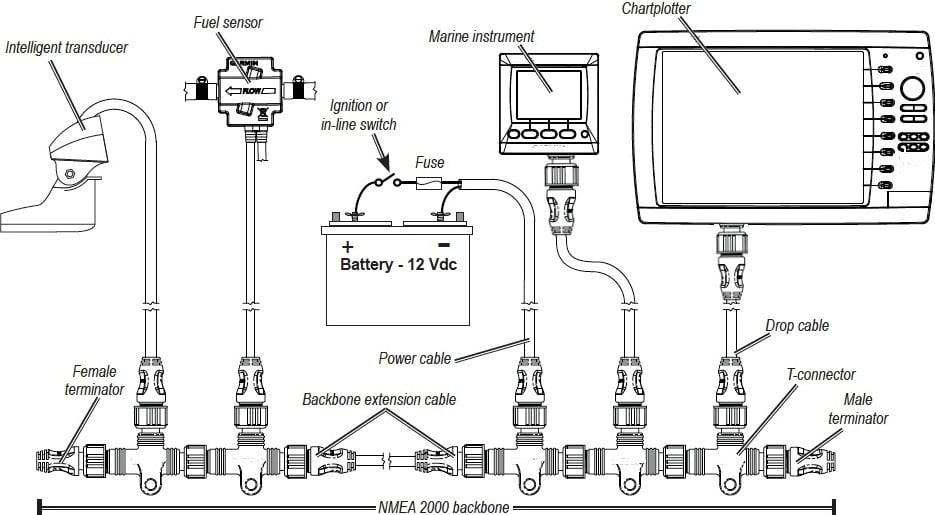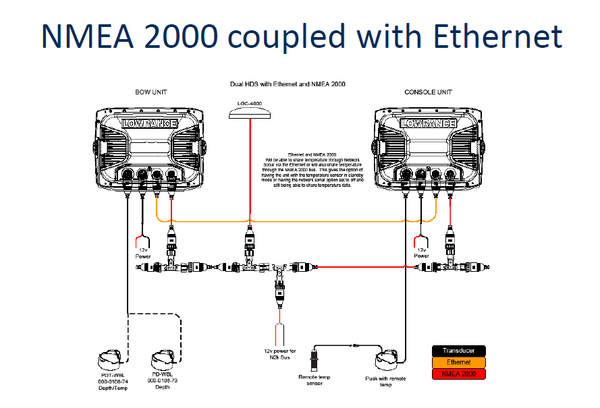

Physically, the wiring is four wires made up of two twisted pairs - one pair for data output and one pair for data input. Interfacing to a computer is usually done via an RS232 to USB interface. The electrical standard is RS422, although most hardware with NMEA-0183 outputs are able to drive a single RS232 port. (It is slowly being phased out in favour of the newer NMEA 2000 standard, but this is not used on Alba.)

NMEA 0183 is an electrical and data specification for communication between marine electronics such as echo sounder, autopilot, GPS receivers and many other types of instruments. The chart plotter and radar were bought in 2015 and are connected together using SeaTalk-HS. The maximum distance for any device from the bus is six meters, the maximum backbone cable length is 100m (328 ft).Alba has electronic equipment that predominantly interfaces using SeaTalk 1 and NMEA 0183. The NMEA 2000 network, like the SAE J1939 network on which it is based, is organized around a bus topology, which requires a single 120Ω termination resistor at each end of the bus (the resistors are in parallel, so a properly terminated bus should have a total resistance of 60Ω). NMEA 2000 supports a disciplined multiple-talker, multiple-listener data network whereas NMEA 0183 requires a single-talker, multiple-listener (simplex) serial communications protocol. 4800 bits/second for NMEA 0183) and uses a compact binary message format as opposed to the ASCII serial communications protocol used by NMEA 0183. It has a significantly higher data rate (250k bits/second vs. NMEA 2000 is a successor to the NMEA 0183 serial data bus standard. NMEA 2000 devices and J1939 devices can be made to co-exist on the same physical network. NMEA 2000 is based on the SAE J1939 high-level protocol, but instead defines its own messages. NMEA 2000, often abbreviated to NMEA2K or N2K, is the protocol that connects devices using the Controller Area Network (CAN) technology originally developed for the auto industry. NMEA 1803, and its successor NMEA 2000, are plug-and-play communications protocols developed by NMEA to allow devices made by different manufacturers to communicate with each other. During its early inception, NMEA focused its efforts on improving communications amongst manufactures. The National Marine Electronics Association (NMEA) was founded in 1957 to strengthen the relationships between electronic manufacturers. The plug-and-play interface allows devices made by different manufacturers to communicate with each other within the same network without causing interference between devices. NMEA 2000 is a plug-and-play communications standard used for connecting marine instrumentation within vessels.


 0 kommentar(er)
0 kommentar(er)
